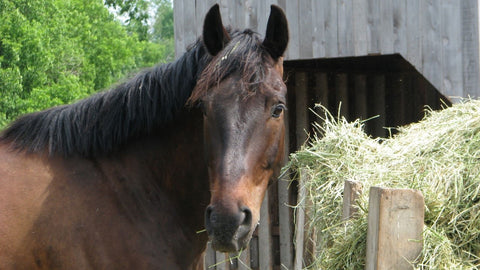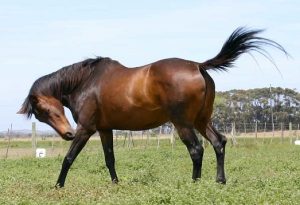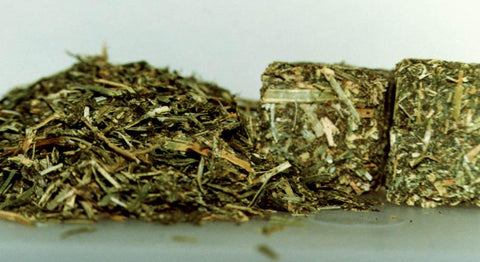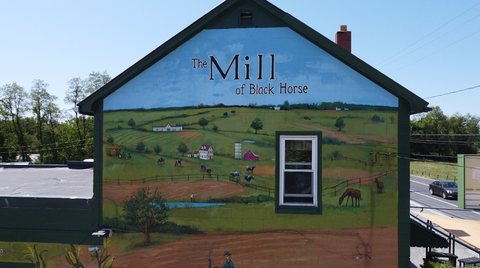Most horse owners understand that horses are designed to be grazing animals. Which means that in order for horses to maintain a healthy gut, small amounts of feedstuff available continuously throughout the day and night are necessary. To that point, forage (as in grass, hay or hay alternatives) is the substance implied for grazer consumption. The average horse should consume about 2% of its body weight in forage per day. Other sources, such as bagged grains/feed and supplements are added to the diet to make up for nutrition requirements not already met by the forage. So far, most horse owners would agree with these facts. Once we begin discussing the differences of hay, however, is when many varying opinions and myths come to light.
Grass hay is, arguably, the most common version of forage following fresh pasture grass. Grass hay comes in a variety of options with timothy and orchard grass being the most typical. Relatively speaking, grass hay is less nutrient dense than alfalfa making it an excellent option for gut fill. As we know, horses need to have a slow and continual consumption of forage going thru their digestive system in order to maintain a happy and healthy gut. However, while they need to be continuously nibbling on forage, high nutrient levels can often lead to weight gain. So there is a balancing act to contend with.
While grass hay may be lower in protein, calcium, and overall calories than alfalfa, it does tend to be higher in sugars and starches. So even though it is an excellent option for the vast majority of horses, those dealing with metabolic issues may find grass hay to be problematic.
TIMOTHY VS ORCHARD
What are some basic things that you should know about the differences

between timothy grass and orchard grass? Timothy grass typically offers a low to moderate calorie content, a moderate protein level and a balanced calcium to phosphorus ratio. Orchard grass typically offers the same balanced calcium to phosphorus ratio; plus a higher calorie content and protein level.
Timothy was one of the first grasses to be cultivated into hay for horses and therefore has a long and trusted reputation among horse owners. The biggest drawback to timothy grass hay is its availability. Generally speaking, timothy grass takes longer to grow (typically 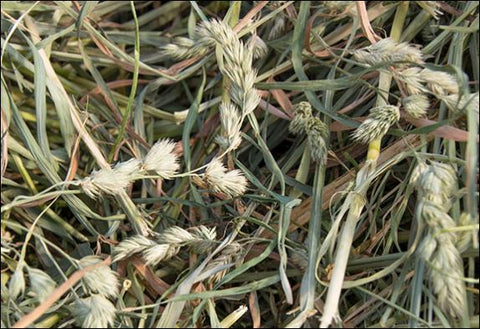 only yielding 2 cuttings per year) and requires a substantial amount of moisture. In comparison, orchard grass has a faster grow rate, typically yielding 3 cuttings per year and is capable of growing in moderately dry environments.
only yielding 2 cuttings per year) and requires a substantial amount of moisture. In comparison, orchard grass has a faster grow rate, typically yielding 3 cuttings per year and is capable of growing in moderately dry environments.
Alfalfa
Legumes, such as alfalfa hay, tend to get a bad reputation for
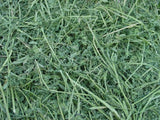
making a horsehot, being too ‘rich’ and, therefore, potentially dangerous to feed. There are certainly reasons in which these overall perceptions were formed but as a broad statement are not, all together, accurate.
As a general concept, sugars and starches are what makes a horse ‘hot’…not fiber and not protein. Think of yourself or a human child. If you eat a snickers bar or something with a high level of sugar, what happens? Do you get that immediate pick-me-up? Do you dread the moment that surge passes, bringing with it the inevitable drop in energy? Does the child begin to bounce off the walls and then crash a while later?
Now, what happens if you eat a big salad? How about a steak? Do you or the child get that same kind of insulin spike? How about that rollercoaster pick-me-up and drop off? Nope, you sure don’t. That same concept should be applied when considering the correct forage for your horse.
Did you know that alfalfa hay tends to be lower in sugar and starches than grass hay? Thus, making it an ideal forage solution for horses with specific metabolic disorders, such as:
- Insulin Resistance
- Cushings
- PSSM (Polysaccharide Storage Myopathy)
- Equine Metabolic Syndrome
- Laminitis
Sounds backwards to the overwhelming assumption that alfalfa is too ‘rich’ for some horses, let alone those suffering with metabolic conditions, right?
The flipside to alfalfa is that it also tends to be higher in caloric values and overall nutrition. Alfalfa is an excellent option for a horse that needs to gain weight; that broodmare during her last 3 months of pregnancy; and the old, finicky, Cushings pony that is getting a little ribby. But, what about the already heavy-set Quarter Horse that has been diagnosed with PSSM? He needs the low sugar and starch aspect but doesn’t need the added calories. So, now what?
This is where so many of the opinions and myths about hay options are formed and spread. It is so important to understand that there is no 100%, concrete, blanket answer, formula or equation. Each horse is an individual with specific genetic make-up, age, activity level and overall health. The same horse owned by one owner at the age of 4, living on the east coast in heavy training…will have completely different nutrition requirements when he is 17 years old and living out his retirement on the west coast. Similarly, two senior horses of the same breed and activity level can have differing nutrition requirements. There are so many varying factors to consider.
Alfalfa can also present a calcium: phosphorus imbalance. The ideal calcium: phosphorus ratio in horses is about 2:1, respectively. Calcium in alfalfa can be up to 3x higher than in grass hay. The phosphorus levels are about the same in alfalfa as they are in grass hay. This is something you want to consider when choosing the appropriate forage for your horse.

On a positive note, the added calcium in the alfalfa has been proven to aid in the prevention and treatment of gastric ulcers. Even a pound or two of alfalfa (especially beneficial if long-stemmed alfalfa) is advantageous to give horses prior to a workout. The long stem of the alfalfa helps to create a ‘basket’, if you will, in the stomach. That ‘basket’ helps to keep the digestive juices in the stomach from sloshing around during physical activity. The calcium from the alfalfa has also been proven to help buffer excess stomach acid, again making it a beneficial tool in preventing gastric ulcers.
In order to balance a diet for horses, the nutrients in hay should be tested since forages are the base of a horses diet. Finding a grain mix to fortify what is lacking in hay can only be done with lab tests. Don't guess...test! Learn more about testing hay here.
As you can see, there are so many varying factors that play a role in the effectiveness of forage in your horse’s diet. Not only is every horse different in their individual nutritional needs based on genetics, age, activity level and overall health; each different forage option has its own set of benefits and drawbacks to carefully compare and weigh.
Connecting with an Equine Nutritionist can be incredibly advantageous in choosing the right forage and balancing the diet for your individual horse and his specific needs. With that being said, hopefully this blog has, at least, helped to differentiate some common facts from opinions and myths and brought to light some of the essential information when comparing alfalfa and grass hay.

